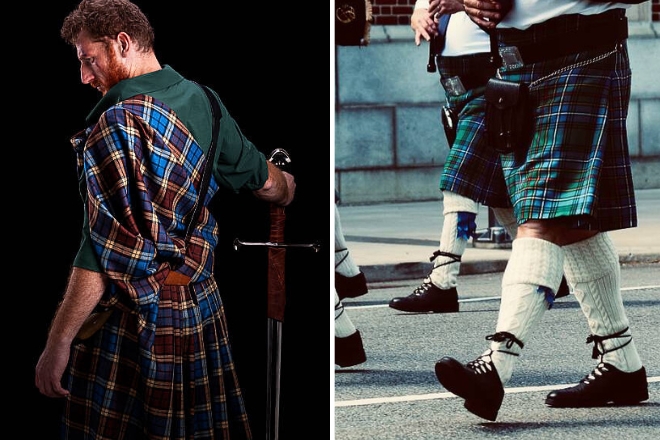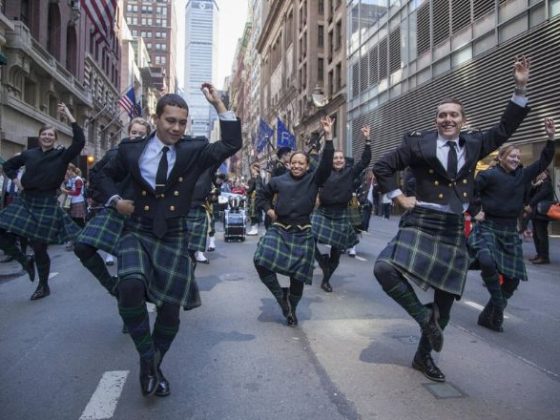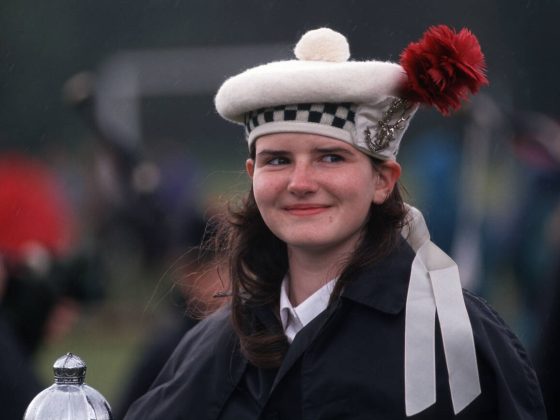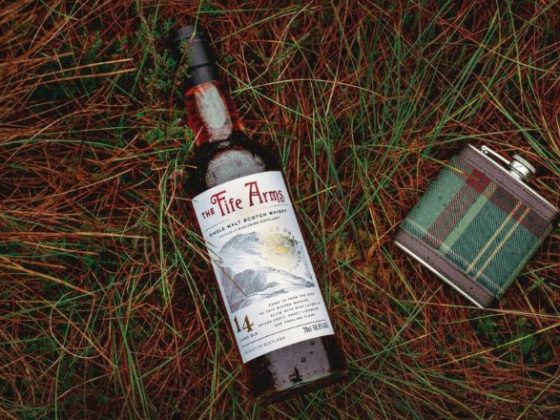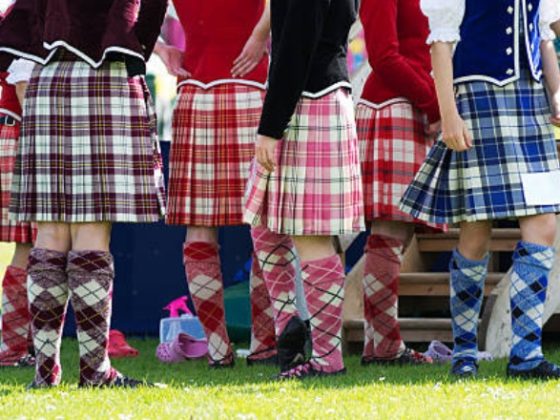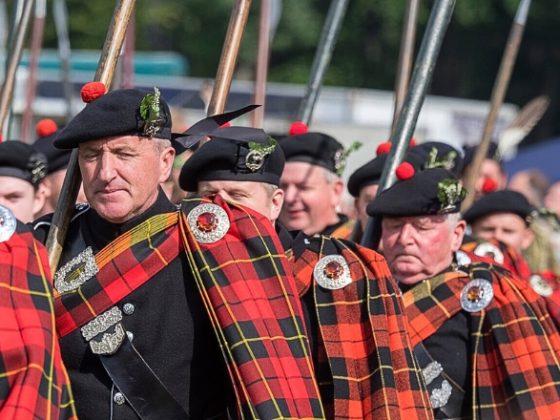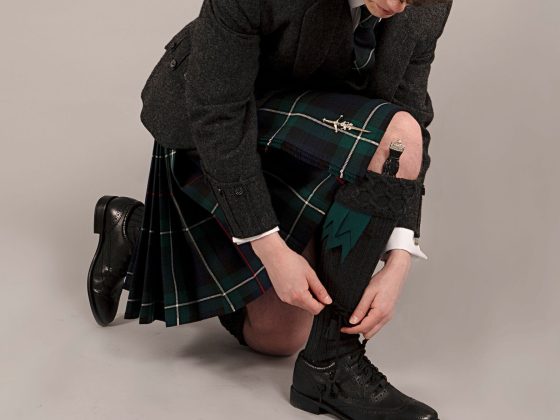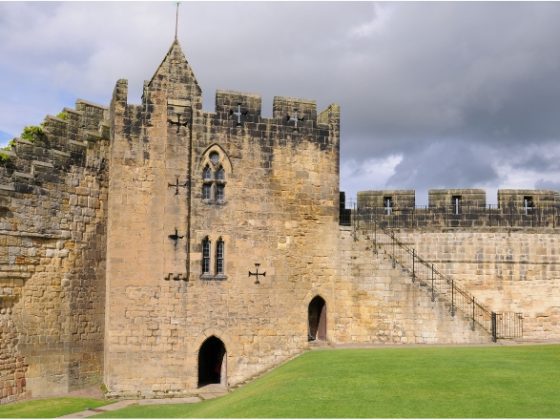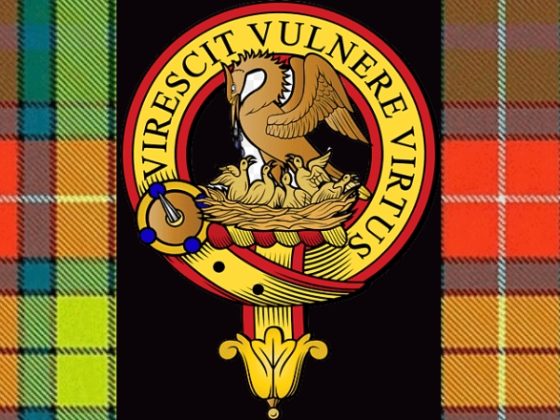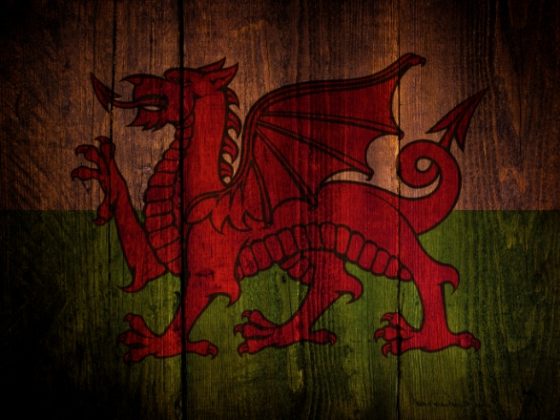Reviving Centuries of Celtic Traditions & Attire!
When you think of kilts, rugged Highlanders in Scotland may come to mind. But did you know that the Irish also have a special connection to kilts? Step back to the 11th century, and you’ll find the intriguing “Lein-croich,” a unique Irish garment with a fascinating history. Kilts may be more famous in Scotland, but in Ireland, they have their own distinct charm. Let’s discover the pioneers who brought kilts to Ireland in the 20th century and explore the various styles and accessories that make up the traditional Irish Kilt outfit.
Whether you want to honour your Irish heritage or make a bold fashion statement, this blog is your ultimate guide to the allure of the Irish kilt. Embrace your roots with pride and dive into the richness of this Celtic tradition!
Are Kilts Irish?
The simple answer to that is “YES”, Irish people have indeed embraced kilts as part of their cultural attire. Kilts and bagpipes are Celtic traditions, with kilts being more ancient among the Scots than the Entire Irish Kilt History. Stepping back in time to the 11th century, the customary Irish dress involved a fascinating garment known as the “Lein-croich.” Akin to a bundled-up blanket draped over the body, this unique attire concealed individuals who wore nothing underneath. Delightfully, paintings from that era illustrate this intriguing aspect of Irish fashion.
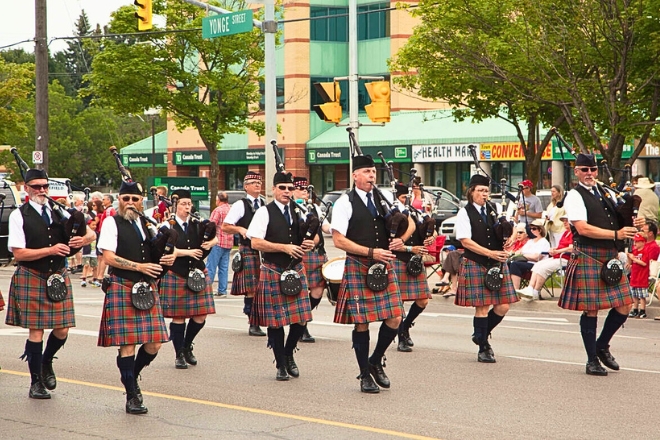
Whereas Kilts are traditionally associated with Scotland rather than Ireland. The kilt is more closely linked to Scottish culture. Kilts have been a significant part of Scottish traditional attire for centuries, and they are often considered one of the symbols of Scottish identity. In Ireland, kilts have been adopted to some extent, especially in the modern era, but they are not as deeply ingrained in Irish culture as they are in Scotland.
Do Irish Wear Kilts? & How Did Irish Kilt Invented?
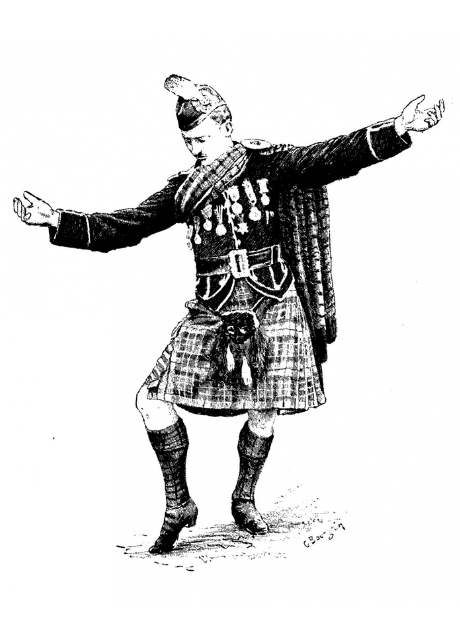
In the early 20th century, around 1910, Irish students and faculty at a school pioneered kilt adoption in Ireland. Each of Ireland’s four provinces, Ulster, Connacht, Leinster, and Munster, has its distinct tartan design. Cork Tartan represents Cork attire, while Scottish kilts became emblematic of Gaelic heritage in the early 1900s. Present-day Irish kilts resemble Scottish kilts in style and appearance. The traditional colour for Irish Kilt is saffron, a deep yellow, often embossed or stamped with shamrocks. Famous across the globe,
Scottish kilts trace their origins to the 1500s, introducing the inaugural version known as the ‘Féileadh-Mór’ or ‘great Kilt’. This “Great Kilt” encompassed a sizable expanse of cloth, elegantly encircling the waist before sweeping upwards and securing over the shoulder. As far as the century, Irish men have adorned kilts, while the Scottish tartan kilts trace back an impressive 300-year history. Irish kilt popularity started in the mid-1800s, with evidence of one dating back to 1590.
During the early 1900s, Irish soldiers in the British army adopted kilts to distinguish their regiments and offer protection. Historical records show that Irish kilts were also worn during political gatherings, music festivals, and weddings. Irish patriot Patrick Pierce led the school to adopt kilts for dance students’ uniforms. This innovative initiative played a significant role in further popularising kilts in the Emerald Isle.
Accessorising Your Irish kilt!
In the traditional Irish kilt attire, essential Irish Kilt Accessories include the Irish Sporran, a functional pouch worn at the front of the kilt. This pouch can be adorned with shamrocks and green accents, adding a patriotic touch. Unlike Scottish kilts that often display clan crests, Irish kilts commonly feature shamrock crests or are left unadorned for a more minimalist look. For formal occasions, one may opt for the Brian Boru Jacket, which bears resemblance to the Charlie Jacket. It can be paired with a tie and a plain wing-necked shirt.
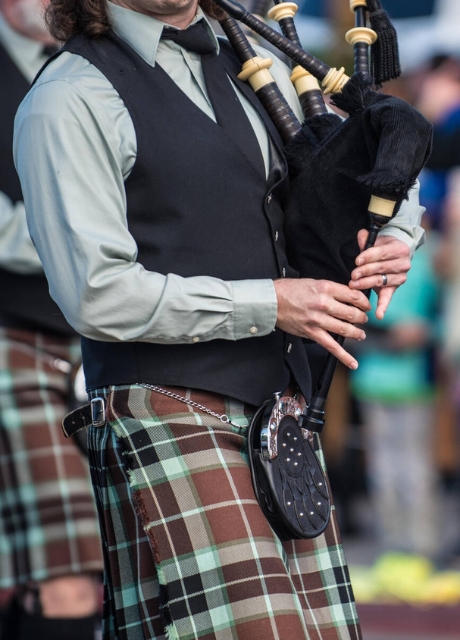
Another suitable choice is the Kilkenny Jacket, akin to the Argyll Jacket, which is versatile enough to suit both formal and relaxed events. This ensemble can be complemented by a standard collared shirt, a waistcoat, and a bowtie. To complete the traditional Irish Kilt Outfit, one should wear Kilt Hose, traditionally in cream colour and with tartan-coordinating ribbons. Additionally, Ghillie Brogues, leather shoes with long ties, are the perfect footwear choice to complement the entire ensemble.
Traditional Irish Kilt - Learn About Tartan & Clan Symbols
The Irish kilt remained a cherished garment with a 24-metre woollen cloth elegantly wrapped around the waist. Each kilt’s charm lies in its specific tartan colours, symbolising deep clan affiliations with centuries of history. However, it is essential to approach wearing a kilt with respect for tradition and culture. Asking clan permission is polite; some clans cherish their tartans, others may allow their use. The Irish kilt stands out with green and ochre patterns, unlike the Scottish kilt that features a variety of plaids. The kilt isn’t common in everyday wear in Ireland, but remains popular for special occasions like weddings and celebrations. Musicians often don the kilt, adding a touch of elegance to their performances. Scotland has numerous family tartans, while Ireland has only a few for specific surnames like Murphy, O’Neil, and Fitzpatrick.
However, the Recently emerged, Irish tartans symbolise distinct counties, born in 1996 by the House of Edgar. Popular for honouring Irish heritage, they span from County Antrim to County Wicklow. Use our Tartan Finder to embrace your origins with county-specific plaid. counties and provinces of Ireland are also represented by their distinctive tartans, reflecting the wearer’s ancestral roots. For instance, those from Cork may proudly wear the Cork County Tartan. The historical significance of Irish tartans further distinguishes them from Scottish counterparts. The Irish National tartan, with Irish flag colours on black, symbolises timeless national pride.. Irish Americans have their special tartan. Dropkick Murphys tartan: kelly green, silver on black for formal occasions. Finally, saffron, the “colour of kings,” honours mediaeval Ireland and symbolises Irish military valour in the Saffron Kilt.
Traditional Irish Kilt:
Although a Scottish kilt and an Irish kilt might look similar, they have very different histories and meanings. Irish Kilt is a cool choice if you want to show off your Irish pride or represent where you’re from at a fancy event like a wedding. Picking the right pattern for the kilt (called tartan) and choosing the right accessories are really important when you’re picking out an Irish kilt. So, make sure you think about these things to get the best Irish kilt look!
“Frequently Asked Questions”
Who wore kilts first, Scottish or Irish?
The historical evidence suggests that kilts were first worn by the Scottish. The earliest accounts of kilts date back to the 16th century in Scotland, while there is no concrete evidence to suggest that kilts were worn in Ireland during that time.
Why did the Irish start wearing kilts?
The Irish adopted the wearing of kilts later, primarily as a symbol of Celtic pride and cultural revival in the 19th century. The kilt was embraced as a way to reconnect with Ireland’s Gaelic heritage and distinguish themselves from the British influence.
What is traditional Irish dress?
The traditional Irish dress consists of various elements, but one of the most iconic is the “léine,” a loose-fitting, full-length linen or cotton tunic. Additionally, other traditional clothing items include cloaks, shawls, and caps, which were commonly worn by both men and women.
What is an Irish kilt called?
“Lein-croich” is a term used in Irish Gaelic to refer to the traditional Irish kilt. It is the Irish Gaelic equivalent of the English word “kilt.”
What did the Irish wear before kilts?
Before adopting kilts, the Irish had their distinct clothing styles. The common attire for men included the “brat,” which was a large woollen cloak, and the “trews,” which were tight-fitting trousers. Women wore the “brat” as well, along with long dresses and various layers of garments, depending on the region and social status.

